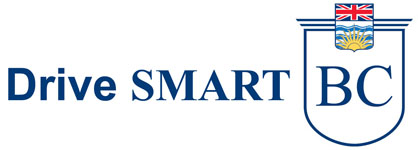I’ve always understood penalty points to be a kind of score keeping method to assign a level of risk to the breach of a traffic rule. The more dangerous the violation, the more penalty points that would be assigned to a driving conviction. Rack up too many points in a set period of time and you would have to pay ICBC premiums and risk a driving prohibition from RoadSafetyBC. Regardless of the fact that penalty points have been a part of driving in BC for many years, they are generally poorly understood.

The penalty point scheme is set up under Division 28 of the Motor Vehicle Act Regulations. It states that when a driver is convicted of an offence, ICBC will assign penalty points to a persons driving record according to four schedules. The first contains two point offences such as changing lanes without signalling or running a red light. The second lists three point offences that include driving without a driver’s licence or speeding. The six point violations in the third list are driving without due care and attention and driving without reasonable consideration for others using the highway. Finally, we have ten point offences such as impaired or dangerous driving under the Criminal Code.
Effective June 1, 2016 there will be a new category of four penalty points for drivers who are convicted for distracted driving offences such as texting and driving.
Is the level of risk associated to various offences appropriate? I would equate disobeying a red light at an intersection as being more dangerous than speeding, yet the red light offence is only two points while speeding is three. Why was distracted driving assigned four points instead of six? It would seem that texting and driving might be the equivalent of driving without reasonable consideration for others using the highway.
Each year ICBC looks at the total number of points you received during a 12-month assessment period that ends five months before your birthday. The assessment period may include driving offences during an earlier period which have only recently been recorded on your driving record. If you collect more than three points on your driving record during the assessment period, you’ll pay a Driver Penalty Point premium. Depending on the type of offence, you may also be assessed a Driver Risk premium.
RoadSafetyBC decides on driving prohibitions set out in the Driver Improvement Program Policies and Guidelines. In general, a driver in the Graduated Licencing Program may expect a sanction after only one or two tickets in a 24 month period. Experienced drivers have much more latitude. Depending on the type of offence, it could take as many as 15 penalty points over two years before action is taken.
The Guidelines are prefaced with the advice that they are just that. An adjudicator may choose to take action in a different manner if the driving behaviour justifies otherwise.
Is there any way that I could just pay a fine and not receive the penalty points? This is a question heard frequently in traffic court. The only connection between penalty points and traffic court is on whether you are convicted of the offence as a driver or not. If you are convicted, the offence goes on your driving record and ICBC will assess points.
To comment or learn more, please visit DriveSmartBC.ca.
Constable Tim Schewe (Retired)
DriveSmartBC: Where better than average drivers satisfy their curiosity.






